- Camping
- Fall Treks
- Moderate Grade Treks in Himalayas
- Sikkim & Darjeeling
- Sikkim Treks
- Spring Treks
- Summer Treks
- Up to 2 weeks trek
Goecha La Trek:
Upcoming Goechala trek in Spring – Summer 2025: Group tour starting on 15th Novemeber 2025, as per the given itinerary. We do arrange customised tours for your group only as per your preferred date.
Goechala Trek is among those trails that are popular with both Indians and people all over the world. Goecha La Trek ranks pretty high on the list, if not a chart-topper. The trail is a typical Eastern Himalayan moist and almost evergreen forest with a truly majestic view of Kangchenjunga, up close along with a series of surrounding peaks.
Below is your Complete Guide to Goechala Trek for 2025. Click on a link to jump to a specific part of information.
Brief itinerary
About Goechala Trail
Trail profile – Distance vs Altitude graph
How difficult is the tek?
Goechala View Points 1,2,3
Best time to visit
Weather pattern and observations
Expected temperature
Flora-Fuana – wildlife and birds
Sikkim permits
Booking for foreigners
How to reach basecamp
Brief Itinerary:
Day 1: Drive from NJP or Bagdogra (IXB) to Yuksom (~ 1710 m/5600 ft) – 160 km – 8 to 9 hours. Lodge or homestay accommodation (twin or triple sharing).
Day 2: Trek to Sachen (~ 2200 m/7215 ft) – 8 km – 4 hours, a half day hike. Camp (twin sharing tent).
Day 3: Trek to Tsokha (~ 2960 m/9700 ft) via Bakhim – 7 km – 4 to 5 hours, half day of climb.
Day 4: Trek to Dzongri (~ 3965 m/13005 ft) – 12 km – 6 to 7 hours via Phedang. Challenging day due to sustained climb. Camp.
Day 5: Rest and active acclimatisation day at Dzongri. Sunrise views from Dzongri top (~ 4120 m) and back, 2 hours. Camp at Dzongri.
Day 6: Dzongri to Lamuney (~ 4150 m/13700 ft) via Thangsing – 14 km – 7 to 8 hours. A moderate day.
Day 7: Trek to Goecha La (View Point 1, ~ 4600 m/15,100 ft) and back to Kochurang – 16 km – 8/9 hours. Long day. Camp
Day 8: Kokchurang to Phedang traverse and then descend to Tsokha – 18 km – 6/7 hours. A moderate day. Camp.
Day 9: Tsokha to Yuksom – 15 km – 5 to 6 hours. All descent. Lodge or homestay accommodation (twin or triple sharing).
Day 10: Yuksom to NJP/Bagdogra – 160 km – 7 to 8 hours drive.
Important notes on the itinerary:
- You need to reach latest by 10 am on Day 1 at NJP, Bagdogra or Siliguri city. You will return to NJP/Bagdogra in 8 hours drive from Yuksom on Day 10, i.e. around 5 to 6 pm.
- Foreigners, i.e. non Indian passport holders need to reach trek base Yuksom on Day 0. This is to process the Trekking Permit/Protected Area Permit (PAP) from Gangtok. Read the permit requirement section for details. You can visit Dubdi monastery and other places around Yuksom the next day and start your trek from Day 2 as mentioned above.
- All trekkers need to submit the Medical Form at Yuksom along with 2 recent passport size photos. These are MUST to obtain the necessary permits.
- Last ATM at Jorethang and none at Yuksom.
- All major mobile networks work at Yuksom. After that you will not get a signal.
About the Goechala trek and the trail:
This trail inside Khangchendzonga National Park (KNP, buffer overlay region is called Khangchendzonga Biosphere Reserve), a UNESCO heritage site, is indeed a must to do “Bucket-List” trek for all mountainand nature lovers.
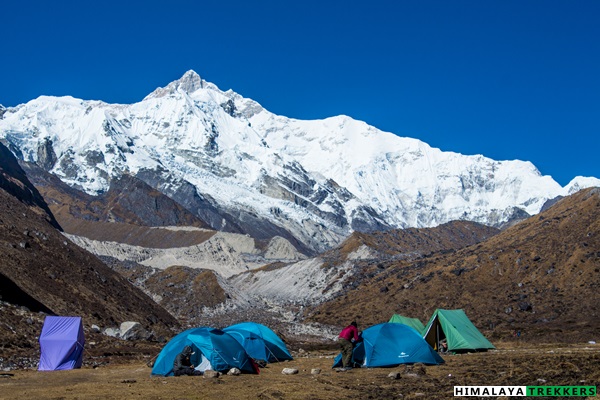

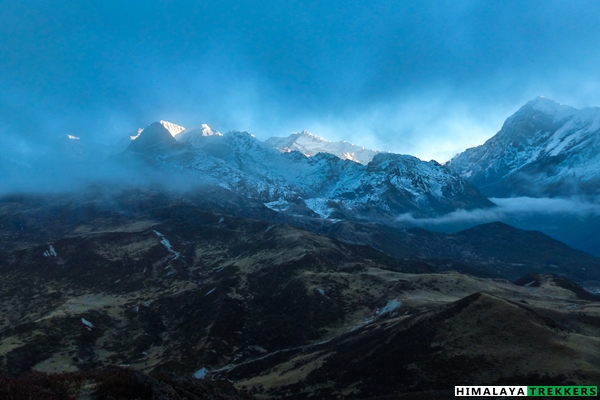
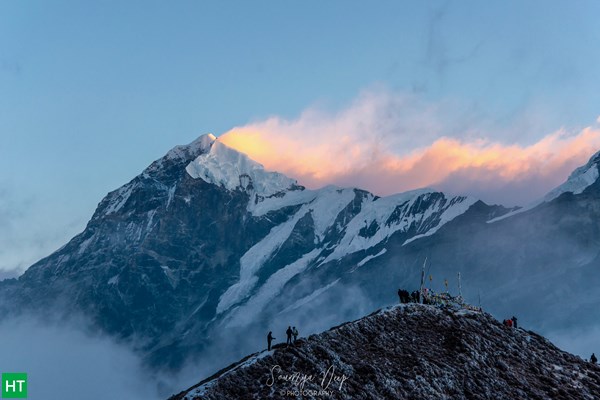
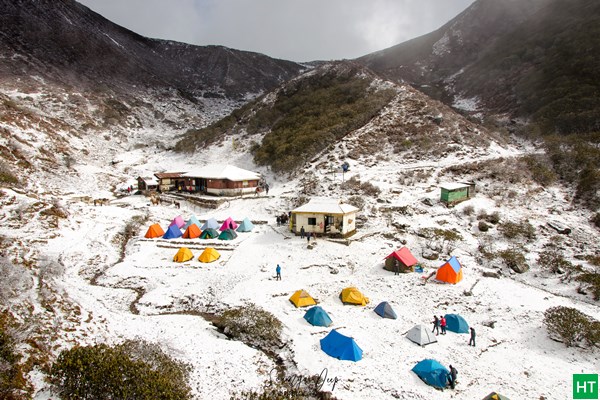
The route climbs steadily to cross a ridge at Dzongri, then proceeds north to the Oglathang Valley to reach the high altitude pass , Goecha La at its head. The trek splits in two parts.
First half till the high point of Dzongri. Dzongri top offers amazing panorama of high peaks in Sikkim and Nepal. Kanchendzongha Range, Kabru North, South and Dome, Pandim, Rathong, Kokthang, Tinchenkhang, Jopuno, Siniolchu are notable. During later half, the trail enters into the scenic wide open meadows and Prek Chu river valley and finally ends up in moraine ridge at Goecha La. The route has very thick vegetation, along with hundreds of bird species, butterflies and wildflowers, especially different varieties of Rhododendrons. Here we will visually walk through the trail to Goecha La.
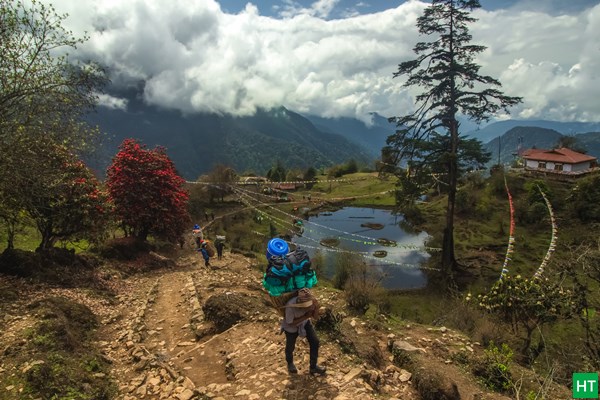

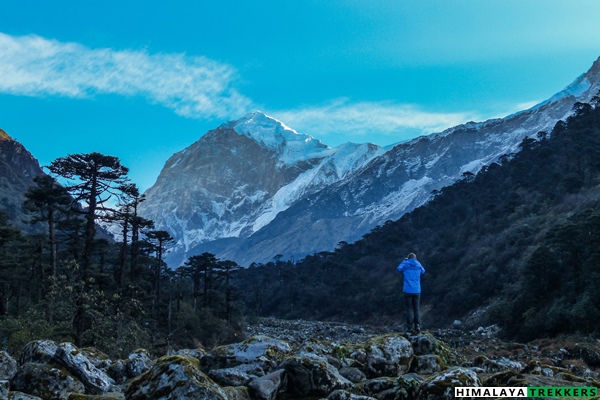
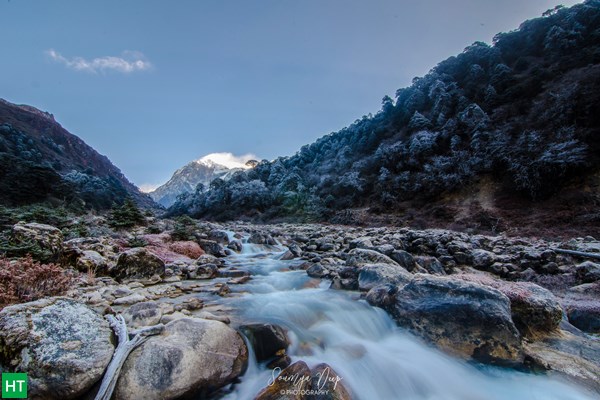
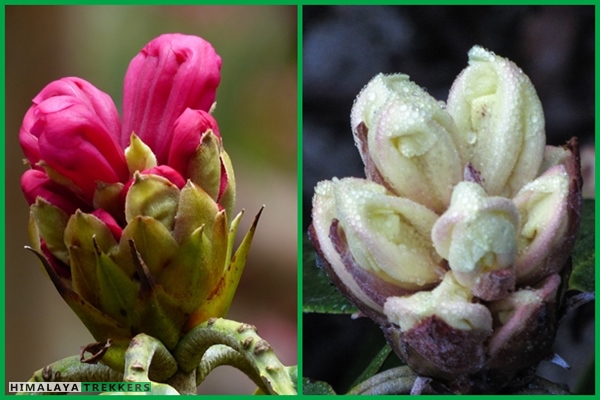
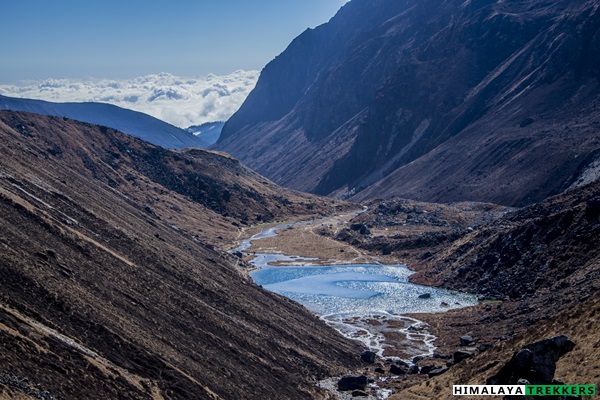
Altitude and distance profile of the trail:
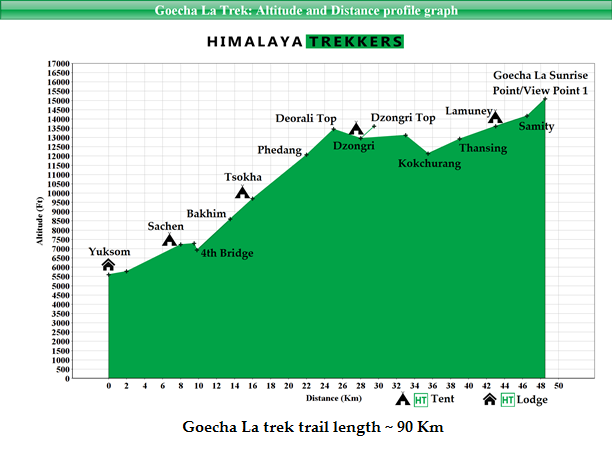
Who can trek to Goechala? Difficulty level
Goechala is a trek for experienced hikers having fairly good physical fitness. Technically it’s not a difficult grade trek but one may get into trouble if not prepared adequately. Let’s have a look into the following facts:
- Goechala is a “Moderate” grade trek while strenuous at the same time.
- Sustained walk of more than 80 Km over a span of 8 days.
- Total altitude gain of almost 3000m/10000 ft of which the climb to Dzongri is a rigorous one.
- Multiple nights of camping at or above 4000m/13100 ft.
To get more understanding and details check the article on Goechala trek difficulty and challenges. To conclude, its safe to take Goechala as your next trekking destination if you have completed a couple of multi day high altitude hikes and are leading an active lifestyle.
What is Goecha La View Point 1/2/3 and Goecha Lake?
With effect from spring 2017, trekkers are NOT allowed to go ahead of GoechaLa Viewpoint 1, a.k.a. Goecha La Sunrise Point. So this is the point till we trek and return at present. This is as per the notice from Kanchendzongha National Park (KNP) authority and is strictly enforced. Till 2016 trekkers had an option to go further to Viewpoint 2 (Goecha Lake) and actual Pass Viewpoint 3 (Goecha La) following the well marked trail ahead.
This restriction is probably due to the findings of Snow Leopard presence through night vision camera trap in recent times around View Point 2. It is obvious that our presence should not bother these dwindling population in their natural habit.
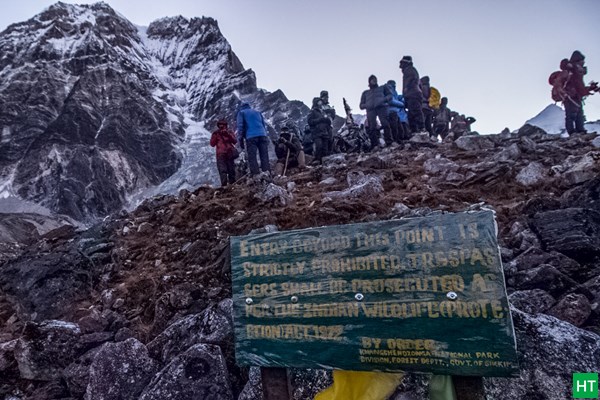
So, as per current permit, we will visit Goecha La View point 1 for sunrise and return. As the name suggests View Point 1 is the best point to view the magnificent sunrise on the panoramic peaks. This point is optimally placed on the trail that you are not too close to certain peaks that you miss the sunrise on others. From Sunrise point you can see Kanchendzongha dominating the vista and a vast panorama of peak sweeping towards the south which are on our left. You can see glaciers, streams, lateral and median moraine ridges on the left and locate a sheer ice fall of Pandim on your right.
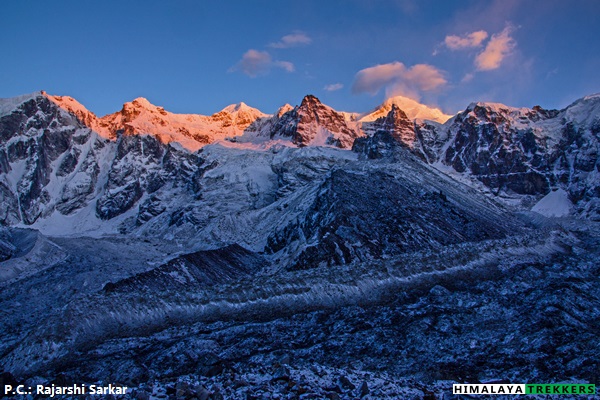
From the sunrise point you can see a rectangular sand bed ahead and down below, called Zemathang. It takes around 1 and half hours to reach Viewpoint 2 (Goecha lake) fromthe Sunrise point.
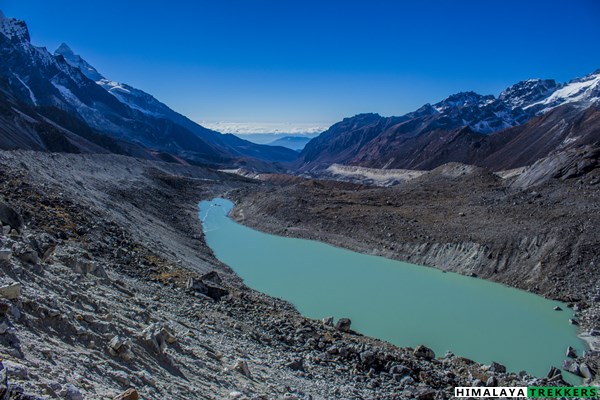
From here the pass is another 30 minutes ahead over the boulder and some moraine/scree zone. Overall it should take someone around 4 hours for a round trip from View Point 1 to Goecha La Pass and return. However as already said it is strictly prohibited by laws to proceed beyond ViewPoint 1.
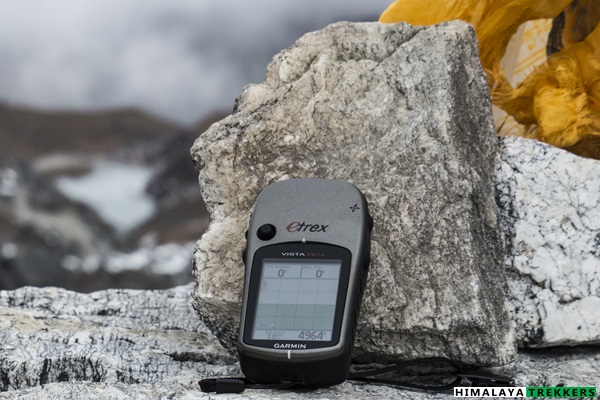
What is the “best” time for Goecha La trek?
As like most of the high altitude treks, there are two seasons for Goecha La. The first being the Spring during April and May – the blooming season. The later, Autumn/Fall, known for clear weather and spectacular mountain views during Oct and November.
Being in the Eastern Himalayas this area observes longer monsoon. Clouds start to hover from April and prolong till October beginning. There are two distinct seasons when this year trek is particularly beautiful:
1) Spring/Summer trek during Rhododendron bloom: April and May is spring time, blooming time. Flowering starts as early as March in the lower elevation, and gradually towards end of spring on higher altitude. Rhododendron and Giant Magnolia are two most famous along with several other wild flower species. Cloudy or misty atmosphere is common during Spring. Though clear mountain views are not uncommon, specially during morning. For bird watching this is certainly a better season to visit.
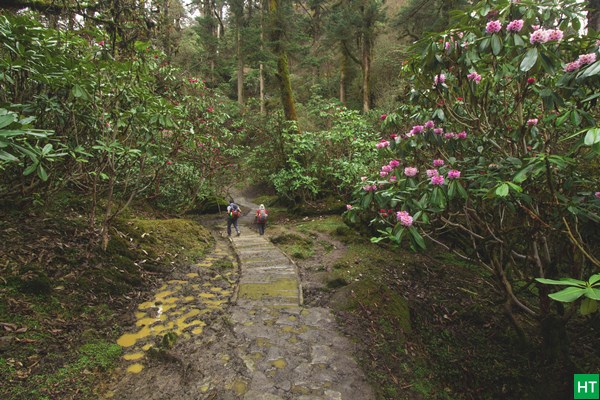
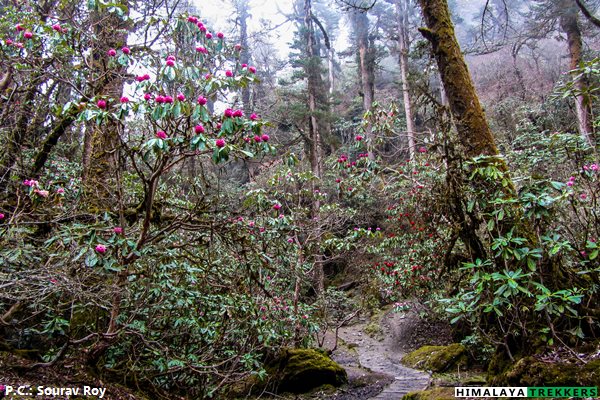
2) Fall/Post Monsoon for clearer weather: From October to end of November. In the beginning of October clouds start moving out from this region and weather becomes clearer. November is particularly known for its crystal clear views of the mountains. From end of November it becomes very cold at Dzongri and higher. Also being very high altitude the chances of snowfall is high.
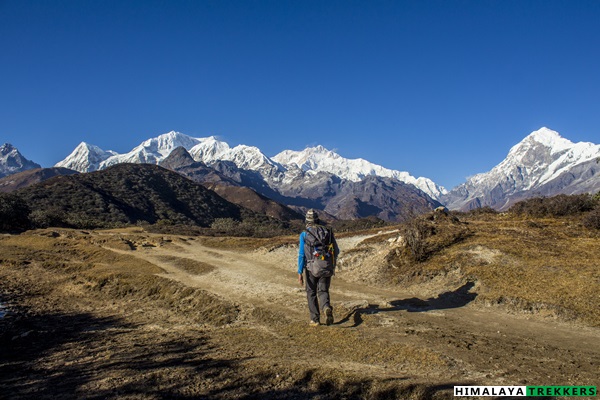
Check out this photo story of Goecha La trek in autumn during mid November.
Best season and weather pattern: Observations and cautions
This is perhaps pretty important if not the most important thing while planning your Goechala trek. Afterall who will not be keen to get the “perfect” weather on this spectacular trail rather than risking with unwanted weather?
Be it pre or post monsoon season, take it with a pinch of salt on it. Climate is evermore changing and you should be careful while selecting a particular week even within the so-called “best season”.
Here are our observations based on our operations since a decade now:
- Don’t plan to start this trek in late May, rather complete it by mid May. Chances of rain are significantly high in late May or later.
- Although the post monsoon season “normally” starts by late September, we have seen rain continuing in early October in recent years. Plan this trek from mid October onward for autumn/fall season if your schedule permits.
- Complete the trek by the end of November. December is typically not a good time for this trek from various aspects including lack of colour, absence of various fauna enroute, very cold conditions on high camps and chances of snowfall (which can make logistics very difficult).
Expected temperatures on Goecha La trek:
Sikkim/Darjeeling region is known for its moist weather, almost year around. At higher altitude dampness adds on top of the natural cold conditions.
Usually the minimum temperature of a place is attained early in the morning, 3 to 5 am. During Goecha la trek, there are couple of days (one being the Dzongri top and the other to Goecha La) when you have to leave camp early in the morning.
In spring/summer, expect the minimum temperature to be around 0°C at Dzongri and Lamuney. At Goecha La View Point 1/Sunrise Point expect colder temperature, specially in the morning. Temperature can dip to – 5°C. Earlier in season will lead to lower temperatures.
In autumn/fall environment becomes colder and temperature will go down. Temperatures plummet further in late October/November. In November temperature may go down as low as -5°C to -10°C at Dzongri and -10°C to -15°at Lamuney (during late November). Do account strong wind at times which in turn can make you feel colder. This is the wind chill factor and feels like temperature can be as lower than the actual. Temperature inside tent will be around 10°C warmer than that of outside. During daytime the temperature will be cool and may vary from 5°C to 20°C depending upon altitude.
Don’t forget to check the List of things to carry in Goecha La trek or download the PDF.
Wildlife and bird species enroute:
Being inside Himalayan biodiversity hotspot, this trail is teeming with birdlife, all the way from Yuksom to Goecha La. Spring/summer season needs particular mention. At lower altitude you can spot different species of Bulbul, Woodpecker, Barbet, Sunbird, Thrush, Treecreeper and Tits. At mid altitude Flycatchers, Fulvetta, Magpie, Wren babblers, Laughingthrushes are abundant. On higher altitudes watch out for variety of Finches, Accentors, and Grandala. If you are a keen birder, then don’t miss this field report and guide for birding on Goecha La trail.
If you are keen in birds, look carefully around bushes before reaching Dzongri. You may easily spot a Blood pheasant, which is the state bird of Sikkim.
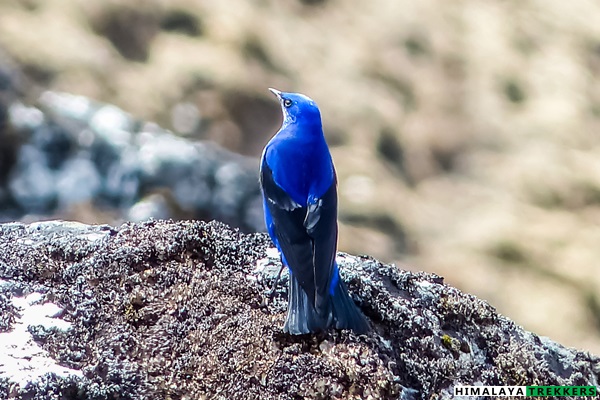
Regarding other wildlife, chances are high that you may spot Yellow-throated marten, Pika, Mountain weasel, and Himalayan Blue Sheep.
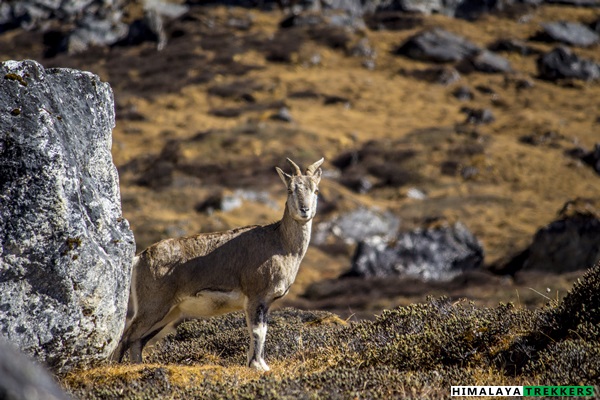
Red Panda is not a common on this trail, you may get a glimpse if you are lucky 🙂

Permit requirements to enter Sikkim and trekking to Goechala:
Sikkim is a permit intensive state to travel. There are different permit required be your are an Indian or a foreigner, whether you trek or a sightseeing car tour. If you are a Non Indian citizen, then you will require additional permits. Read a complete guide on permits which are required to travel in Sikkim for Indians and foreigners.
For Goecha La trek you will need the following, as if you are:
(A) Indian Nationals:
Trekking permit is required inside Kanchendzongha National park (KNP) and the local police verification at Yuksom police outpost. Two recent passport size photos, One personal photo ID card with address proof in it (Aadhar/Driving Licence/Voter ID/Passport) along with photocopies of the same are to be submitted along with a self declaration at Yuksom police outpost. Check here for new permit and safety regulations inside KNP.
(B) For Foreign Nationals:
Any foreigner (some relaxation to Nepalese and Bhutanese citizens) will require erstwhile Inner Line Permit (ILP) and now called Restricted Area Permit (RAP) to enter the boundary of Sikkim. Note that this is FREE OF COST.
Overseas Citizen of India (OCI) cardholders are ALSO treated the same as a foreigner regarding entry and trekking permit inside Sikkim. We need at least two OCI/Foreign nationals to process the Trekking Permit (PAP).
https://www.sikkimtourism.gov.in/Public/TravellerEssentials/pap
- Nationals of Pakistan, Myanmar, Nigeria and China/Hong Kong can only apply for ILP/RAP through Ministry of Home Affairs, Government of India, New Delhi.
- Any other foreign national (now Including Bangladesh) can apply and obtain the ILP (RAP), Free of cost, at the police check points while entering into Sikkim state by road. You need to have original Passport, INDIAN VISA/e-VISA with photocopies and 3 copies of recent passport size photos. Below are the ONLY three ILP issuing office on Sikkim border:
- Note that foreigners can’t enter Sikkim via trekking routes from West Bengal/Darjeeling e.g. from Sandakphu Phalut to Singalila cross
1) Melli – South Sikkim – On your way to West Sikkim (Yuksom, Pelling, Hilley, Uttarey, Khecheopalri, Pemayangtse etc.) from NJP/Bagdogra/Siliguri.
NOTE: ILP issuing time is from 8 am to 8 pm everyday (We recommend to reach latest by 5 pm)
2) Rangpo East Sikkim – Assistant Director, Tourism Department, Sikkim Tourism Office, : – On your way to Gangtok and East/South & North Sikkim.
3) Rammam Checkpost when you travel from Darjeeling to West Sikkim via Naya Jorethang. Previously foreigners were not allowed on this road but from 2022 it is open for all. This cuts down the time to reach West Sikkim in case you are already in Darjeeling.
If you produce an itinerary of your trip usually you will get an ILP up to 30 days. The State Government is authorized to extend the same by a further period of 30 days. The extension of the permit can be obtained from FRO at Gangtok and office of Superintendent of Police of the North, West and South Districts.
You will need an additional Protected Area Permit (PAP, often referred to as Trekking Permit) for trekking to Goechala and most of the other Sikkim treks. This is issued to a minimum group of 2 foreigners on strength of signed and valid ILP/RAP.
So how do you as a foreigner can book Goecha La trek with HT in Sikkim?
- We will require at least one additional day to process the PAP/Trekking Permit. This can’t be processed in advance and we can only apply once we receive your signed copy of ILP. This means that you can’t start the trek the very next day you enter Sikkim. We would recommend a couple of days in advance.
- To open booking, we will require a minimum of 2 foreign nationals trekking together. Later we can take solo trekker booking in the same group/date in case of Fixed Group Departures.
- We charge an additional ₹ 5000 as Service Charge + 5% Govt. Tax per person to process the Trekking Permit/PAP and also to counter the differential of various permit fees/per day entry tickets inside Kanchendzongha National Park (KNP) for Non Indian nationals. In this process we get your PAP from Gangtok and send it back to the respective trek base (here Yuksom).
In simple words, it is not difficult to get the required permits to trek inside Sikkim, if you are a group of minimum 2 persons and reach Yuksom on Day 0 to follow our trek itinerary.
Do carry multiple copies (both hard and soft versions) of your recent passport size photos and photocopies of your documents (Passport/Visa/ILP) to avoid a showstopper on mountains!
Access to Goecha La trek base, Yuksom:
You need to reach NJP (by train) or Bagdogra (by flight) in West Bengal for your Darjeeling or Sikkim trips. These are located on two sides of the outskirts of Siliguri city. Kolkata is well connected to Siliguri through flights and overnight trains and busses (due to road dynamics even a Volvo may take 15/16 hours!) .
Do carefully check for the latest arrival timings on Day 1 of the itinerary (latest by 9 am) before you book your train or flight tickets.
We will arrange a pickup and drop from NJP/Siliguri to Yuksom and back. This will be shared by the team members on actual basis and you pay directly to driver/owner on spot. Typically a Tata Sumo/Mahindra Maxx type Jeep charges ₹ 7000 one side which can accommodate comfortably 5 to 6 and up to 8 persons. Tempo Traveller type vans are not available in this route. This cost is NOT included in the TREK FEE.
For details on how to reach nearest railways station/airport and move to trek base independently/public transportation check the details in GETTING THERE TAB.
Here is a road map with major points enroute from NJP/Bagdogra to Yuksom.
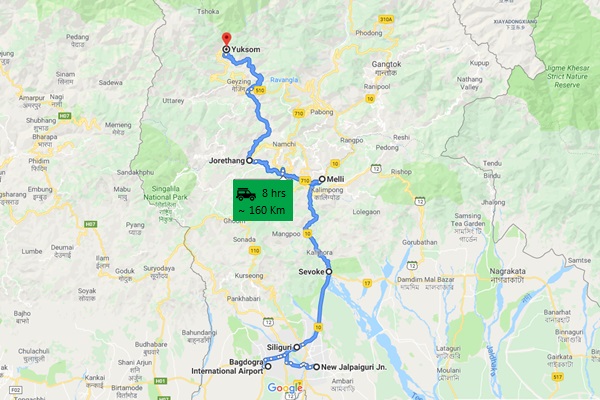
Why treks with HT?
| Expertise: | 15 years of on-the-ground experience |
|---|---|
| Support staff: | Qualified local & office staff |
| Group size: | Small groups up to 15 |
| Insurance: | Travel insured trek and tour itinerary |
| Easy Bookings: | 25% Booking Deposit |
Location: Sikkim, Eastern Himalayas.
Duration: 8 days of trekking; NJP to NJP in 10 days
Prerequisite: One or two prior Himalayan trekking experience is advised. Trekkers must be in good physical condition to endure sustained walk and climb.
Grade: Moderate (& Strenuous)
Physicality: 7/10
Trail Length: Approx 80 km
Highest Point: Goecha La (View Point 1/Sunrise point) ~ 4600 m/15100 ft
Seasons: April/May (Spring/Summer) & October/November (Post Monsoon/Fall)
Further Option: From Dzongri one can add a 3 days side trip to Chaurikhang, base camp of Himalayan Mountaineering Institute (HMI). Also one may take a different route while descending from Thansing to Lampokhri and then to Labdang and Tashiding (Goecha La Kasturi trek).
Access: Trek starting point (trek base) is Yuksom, 160 km from NJP.
Rail station: New Jailpaiguri (Station Code: NJP)
Airport: Bagdogra (Airport Code: IXB)
Map:
Upcoming scheduled dates for Goecha La trek:
- You can check the scheduled Fixed Departure dates in the calendar available inside Booking Form or inside REGISTER NOW form. Tour starting Dates are highlighted as per our itinerary (Day 1 of 10 days itinerary).
- At present BOOK NOW functionality is disabled. You can get all the information in your email by submitting the REGISTER NOW form.
- If you are a group of people and available dates are not matching then you may select Custom date mode (by clicking the Select your custom date) and fill in the displayed form.
- You can also check all the available dates at a glance in our TREK CALENDAR.
- Trekkers need to reach NJP/Bagdogra on Day 1 morning (latest by 10 am). Return to NJP/Bagdogra on Day 10 early evening (6 pm). Arrange your tickets for inward journey and return accordingly.
| DEPARTURE LOCATION | New Jalpaiguri railway station/Bagdogra airport |
| REPORTING TIME | 9:00 AM for a prompt departure to Yuksom (Day 1) |
| RETURN LOCATION | New Jalpaiguri/Bagdogra/Siliguri |
| RETURN TIME | Approximately 6 PM (Day 10) |
How to reach Yuksom (The trek base):
Depending upon the trek members we will arrange a pickup and drop from NJP/Siliguri to Yuksom and back. This will be shared equally by the availing team members on actual basis.
Typically a Tata Sumo/Mahindra Maxx/Bolero charges Rs 6000 one side which can accommodate 6 to 8 people. This is NOT included in the TREK FEE and to be payable directly to the driver/owner.
Nearest Rail station: New Jailpaiguri (Station Code: NJP)
Nearest Airport: Bagdogra (Airport Code: IXB)
If you want to reach Yuksom by public transportation then here is the options. You have to reach Tenzing Norgay Bus Terminus in Siliguri. Then take a shared jeep for Jorethang in south Sikkim, takes around 4 hours. From there one may get a shared jeep service for Yuksom, but a seat is not guaranteed. The earlier you reach Jorethang the chances are higher to get this service. From Jorethang it is another 3 hours journey to Yuksom. Often It is difficult to reach Yuksom from NJP/Siliguri in one day.
For the treks in Sikkim and Darjeeling , one has to reach the city of Siliguri (considered the corridor to the North-East) in West Bengal.
The nearest Railway Station is New Jalpaiguri (NJP), 5 Km from Siliguri and the airport Bagdogra is 10 Km.
You can fly or by train reach Siliguri from Kolkata ( good for the trekkers coming from South/central or Western India) or Delhi as per your convenience from any part within India.
Direct flights are available from New Delhi and Kolkata. All the flights to Bagdogra reaches late in the morning or early afternoon. It becomes difficult to reach the trek base like Yuksom/Hilley/Uttarey on the same day unless a car is booked (takes around 8 hours to reach). One can stay the night in Siliguri and start the travel to the trek base next morning. It is better to reach Siliguri by flight/train to Kolkata and then take an overnight train to NJP unless you are coming from northern India.
From Kolkata to Siliguri:
1) By train:
There are several overnight trains running between Kolkata (Howrah or Sealdah) to NJP. Day trains are also available.
From airport (Dumdum, CCU) , Sealdah railway station is 15 Km and may take 1 to 2 hours depending upon the time you travel. Howrah is 17 Km and may take up to 2 hours during the heavy traffic in the rush hours. Howrah and Sealdah are only 5 Km apart, though it may take an hour to travel. Pre Paid taxi booths are available.
DARJEELING MAIL – Train No. – 12343 (Very good option to reach NJP in the morning. Starts around 10 pm in the night and reaches NJP 8 am in the morning.)
PADATIK EXPRESS – Train No. – 12377 (Very good option to reach NJP in the morning. Starts around 11 pm in the night and reaches NJP 9 am in the morning.)
KANCHANKANYA EXPRESS – Train No. – 13149 (Starts at 8:30 pm in the evening and reaches NJP 7:30 am in the morning)
SHATABDI EXPRESS – Train No. – 12041 (Day train, starts 2:15 pm in the afternoon and reaches NP at 10:20 pm in the night. There are hotels/lodges outside the railway station at a walking distance of 5 minutes. Otherwise book an auto rickshaw/taxi to Siliguri, which takes around 15 minutes. There are several hotels around Siliguri Junction/Tenzing Norgay Bus Terminus/S.N.T (Sikkim Nationalised Transport stand).
There are other trains also of which some run daily and some on particular days of week.
Avoid booking wait listed (WL) tickets in AC classes (1A/2A/3A) or Chair Car (CC). Book Sleeper class (SL)/Second Sitting class (2S) tickets which have normally more seats/berths and hence much better chance to get confirmed.
2) By flight:
From Kolkata(CCU) take a flight to Bagdogra (IXB). From airport book a taxi to reach Siliguri which is 10 Km away.
From Delhi to Siliguri:
1) By Train:
Following trains are good to reach NJP and run daily.
DIBRUGARH RAJDHANI – Train No. 12424 (arrives NJP late in the morning @ 10:45 am)
NORTH EAST EXP – Train No. 12506 (arrives NJP @ 8:20 am in the morning)
BRAHMAPUTRA MAIL – Train No. 12424 (arrives NJP at 5 am in the morning. But this train runs late frequently.
Always avoid booking wait listed (WL) tickets in AC classes (1A/2A/3A) or Chair Car (CC). Book Sleeper class (SL)/Second Sitting class (2S) tickets which have normally more seats/berth and hence much better chance to get confirmed.
2) By flight:
From Delhi (DEL) take a flight to Bagdogra (IXB). From airport book a taxi to reach Siliguri which is 10 Km away.
For night stay in NJP/SIliguri:
Trekkers reaching on the previous day before the journey to the actual trek base need to stay the night in Siliguri/NJP. There are several options in Siliguri for spending a night while staying in Standard or Budget accommodation. It is better to reach to the centre of Siliguri called Siliguri Junction (adjacent to Tenzing Norgay Bus Terminus and Sikkim Nationalised Transport/S.N.T Bus terminus). It takes 30 minutes from Bagdogra or 15 minutes from NJP. There are hotels 5 minutes walking from NJP also.
Return from NJP/Bagdogra:
Normally you reach NJP/Bagdogra from any trek base by 5/6 pm in the evening. You can take any train after 7 pm. Accordingly arrange your homeward journey.
Drive to Yuksom: 160 Km - 8/9 hours
Pickup from New Jalpaiguri Railway Station (NJP) in the morning and reach the trek base Yuksom (~ 1710 m/5600 ft) which was the first capital of Sikkim. The distance is around 160 Km and may take 8 hour including a lunch break. The road goes via Teesta, Malli, Jorethang and Tashiding.

Yuksom is a typical small and laid-back Sikkimese town with one strip of Bazaar area in the centre. The village is spread out on the valley with Kabru peak setting the backdrop. The first king of Sikkim, His Holiness Funchook Namgyal was crowned here by His Holiness Gyalwa Latchen Chembo, the same man who brought Buddhism to Sikkim in 1641. There are quite a few hotels and lodges ranging from premium to budget type. Also there are few restaurants offering veg and non veg food in the Bazaar area. All the major mobile networks wok here and has a small internet cafe. Night stay in tourist lodge.
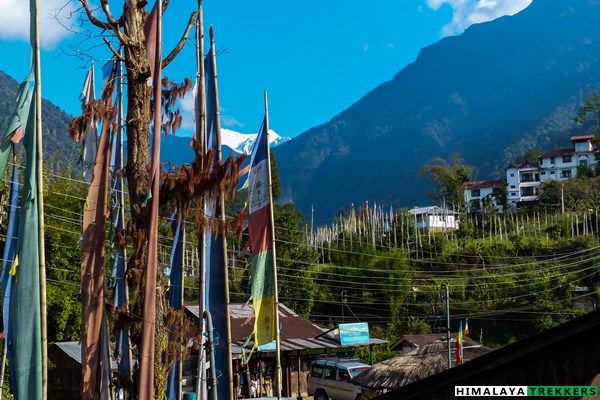
Note: If you plan to reach Bagdogra on Day 1 and hire a reserved vehicle, arrive latest by noon. People willing to reach Yuksom independently must reach NJP latest by 7 am (detail is given above on how to reach Yuksom by public transportation). It is often handy to fly to Kolkata and take the overnight trains to NJP which reach latest by 10 am or you may fly directly to Bagdogra on Day 0. Due to ongoing road construction work between Melli and Jorethang, it takes more than 3 hours to reach Jorethang. Yuksom is another 75 Km on hilly road from here and is another 3 hours. Also you need a break (preferably a lunch break at Jorethang). Yuksom is a small stretch of Bazaar (where the lodges and restaurants are clustered) and sleeps as expected on mountains latest by 9 pm.
Trek from Yuksom to Sachen: 8 Km - 4 hours
We start our 8 days of strenuous but astonishingly beautiful trek from today. To start with an easy day, while spending time and gaining some height on the mountain for Sachen (~ 2200 m/7200 ft). Usually it takes some time in the morning to process the permit at police check post and we start around 9/9:30 am in the morning. By the time you can visit Yuksom Coronation site which is some 5/7 minutes from the bazaar area and has a small monastery adjacent to it.

Have your breakfast from one of the available restaurants and then we take the left trail from the main road in Bazaar area. After crossing desolated Forest Huts and KNP Check post, locate a sign stating “Satellite phones are not allowed in this route” in the Yuksom Colony area. From here we leave the village and get into the trek trail. After leaving few last houses and a nursery we finally depart from Yuksom. The trail is typically a narrow river valley while the river is running in the gorge. We slowly ascent going through the thick vegetation of sub alpine evergreen forest of Sikkim. It runs through moss-laden forests of Oak, Spruce, Chestnut, Fir, Pines, giant Magnolias and wide variety of orchids. Shades of Green change seasonally.
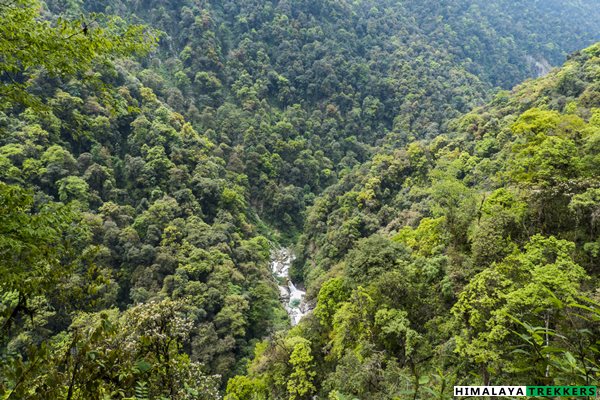
Our trail now enters into Kanchendzongha National Park. This Biosphere reserve is a Botanist’s paradise and rich with exotic birds, butterflies and mammals. We have to cross 3 bridges on the river today, referred as 1st, 2nd and 3rd bridge. We continue our gradual ascent to a clearing we reach, which is our campsite of Sachen for the day. There is a Kitchen Hut built by the Forest Department on the left of the trail and the camping ground is above the trail on the right. The site is full of different bird species including Thrushes and Laughing Thrushes. It may take around 4 hours and we cover a distance of 8 Km. Camp for the night.
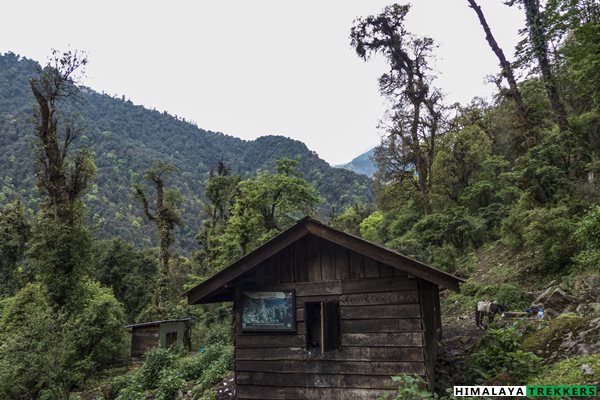
Trek to Tsokha: 8 Km - 5/6 hours
We start gradually for first half an hour and then descend to the 4th bridge on the river Prek Chu (Chu means River in Nepali), the last of the four but most significant. Prek River coming down from Goecha La/Samity area meets Rathong Chu which is feeding from Rathong glacier someway further down.After crossing the bridge, the trail turns to left and spirals up. This is the first half of climb for today and continuous one with steady height gain.
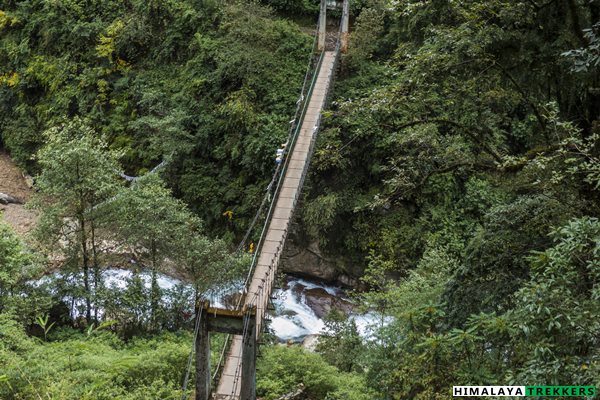
We climb through the often misty forest and slowly the valley widens up on our left. Slowly climbing for an hour and half we reach at the top of this ridge and suddenly turning to right we see the Forest Bungalow of Bakhim ( ~ 2620 m/8600 ft) at our left and house with a coffee shop on the right. The Bungalow with concrete exterior and wooden interior suffered during the earthquake in 2011 but still serves the night halt for the Himalayan Mountaineering Institute (HMI) students. A cup of tea or coffee looking at the valley down under should not be missed. On a clear day one can see Yuksom and the hill station of Pelling from this viewpoint.
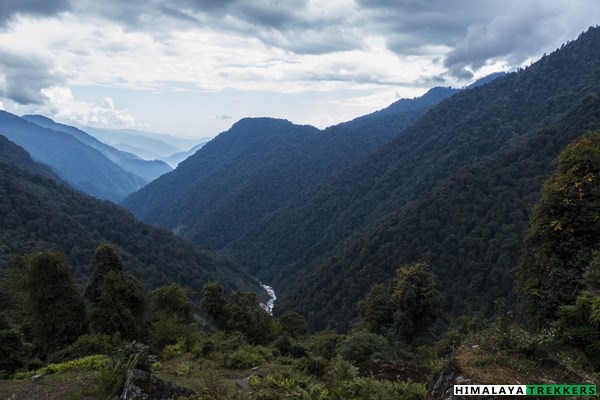
After a much needed break we start our second phase of climb for the day after our break. The trail continues to zigzag and the first noticeable Rhododendron trees appear. During spring we can see the red and the white flowers particularly in abundance. There is a short cut on the right of the main trail but it is better to stay on the well defined track. We turn right and reach a clearing in the forest. From here we continue our climb and until we reach our destination Tsokha (~ 2960 m/9700 ft) a table top on top of the hill. The camping ground of Tsokha is on the right of the trail and is a delight. The wooden Trekkers Hut is adjacent to the camping ground and well equipped with rooms and a big dinning hall. We get the first view of the snow capped mountains behind the Trekkers Hut. Magnificent Mount Pandim is standing straight along with Jopunu and Tinchenkhang.
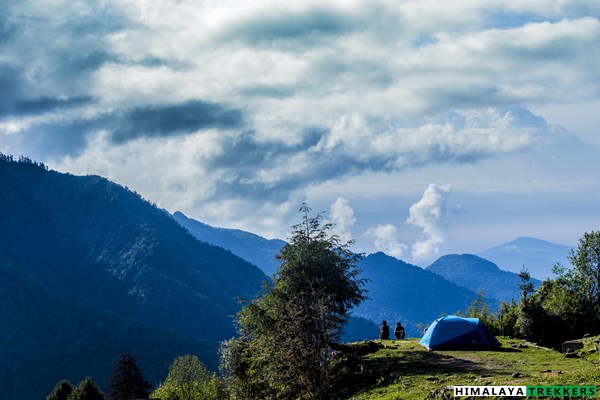
Tsokha used to be a settlement for the Tibetan refugees but recently the people are rehabilitated at Yuksom. There are few private guest houses but one is still operating. Also there is a monastery few turns up on the left of the trail with a shallow pond in front of it. In the afternoon it is worth to visit the monastery and the lone shop which serves tea, coffee and sells woollen clothes, gloves and shawl.
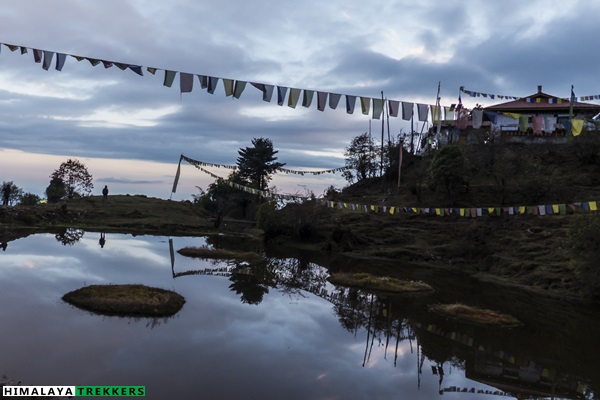
Tsokha has mobile networks working but not a steady one. You may talk with your near and dear ones from here if you are lucky. Total distance we cover is 8 Km and may take up to 5/6 hours. Night stay in tent.
Trek to Dzongri: 12 Km - 6/7 hours
If the weather is clear we can see the sunrise on the backdrop of Mt. Pandim, standing from the camping ground. Being on the mountain for 3 days, our body is supposed to get acclimatised by this time. Today we gain significant height while most of the climb is moderately steep. The walk can be divided into 3 parts, climb till Phedang (~ 3680 m/12070 ft), then further ascent to Deorali Top (~ 4100 m/13,450 ft) and finally a gradual descent to our destination for the day Dzongri (~ 3965 m/13005 ft). We leave Tsokha after crossing the monastery and turn right as the trail to start the steep climb for about half an hour. Then the trail is eases with paved wooden logs as rain turns it pretty muddy by the movements of Yaks and Horses. This trail is surrounded by dense Rhododendrons trees bloomed in different colour ( flowering season is mid April to mid May) and conifers. This is perhaps one of the best jungle trails on the Himalaya and takes away the tiredness of body. Often cloudy, the misty scent of the trail is unforgettable. After climbing another hour we reach to a small clearing where we take a rest and enjoy the silence of the jungle. From this point climbing for little more than an hour we reach the top of this hill, a wide open area of Phedang. There is a Kitchen hut and small sitting arrangement for the tired trekkers. The area remains cloudy mostly after midday and can be damp and cold. The trail splits from this place as the straight one goes to Dzongri and the trail on the right leads to Kokchurang. After a much needed replenishment we start for the 2nd half of our climb. The trail climbs steadily again zigzagging while we climb slowly as can can feel the altitude resulting into headache. Here the Rhododendron trees have turned it bushes aligning more horizontally. Climbing for two hours we reach the top of Deorali, a sacred place having a Chorten and prayer flags. There are spectacular views of the Sikkim mountains and its peaks from here. We start descending from this point and after crossing a clearing on a meadow we climb a small hump. From this hump we gently descend and traverse to the meadows of Dzongri. Walking around an hour we reach the Trekkers Hut and the camping side. The wooden hut consists of four rooms, a dinning hall and a separate setup for kitchen. The camping ground is on the left side of the hut along the narrow stream which flows in front of the hut. We camp or stay in the hut. Total distance is 12 Km and may take 6/7 hours. Night stay either in hut or tent.
Rest and active acclimatisation day at Dzongri. Climb to Dzongri top and back
Dzongri to Lamuney– 14 Km – 7/8 hours
Trek to Goecha La (View Point 1) and back to Kochurang – 16 Km – 8/10 hours
Trek to Tsokha: 18 Km - 6/7 hours
Trek to Yuksom: 15 Km - 5/6 hours
Drive to NJP/Bagdoga: 160 Km - 8/9 hours
P.S.: Distances and altitudes are approximate and may not be exact.
GROUP DEPARTURE TREK FEE: ₹ 24,000 (Yuksom to Yuksom) + 5% GST
If you prefer a personalised private tour (as per your dates) or prefer to customise this trek for your team, then check the cost structure at the bottom of this page.
Inclusions:
2 night’s accommodation at basecamp Yuksom (Day 1 & Day 9) in a homestay on a twin or triple sharing basis.
All tented accommodation on a twin sharing basis during the trekking days.
All meals (B,L,D) during the trek (Day 1 dinner to Day 9 dinner). Breakfast, lunch (packed or hot depending on the day) and dinner. Regular Indian style nutritious vegetarian food during the trek (including occasional eggs). Morning and evening tea will be served.
Excellent Trekking Guide, who will be a local to this particular area and has sound knowledge of the trekking trails around.
Specialised Cook, Support staff, Porters/Packed Animals for carrying the central logistics of the trek.
Camping equipment like Sleeping bag, Carry mattress, Gaiters (if required). (Bring your own sleeping bag if you have a high altitude rated personal Sleeping Bag. Otherwise you should bring a liner for a better hygiene)
Kitchen, dining and toilet tent (dry pit with portable toilet seat) as required during the trek.
All permit fee, camping charges, forest levy required for the trek inside Kanchendzongha National Park for Indian nationals.
Basic Medical & First Aid kit.
Travel cum Medical Insurance Policy covering high altitude trekking tours (For Indian nationals it is included in the TREK FEE, up to 60 years of age). It covers your trek as well as your return journey to NJP, i.e. 10 days itinerary.
Exclusions:
Transportation from NJP/Bagdogra to Yuksom and return. A Tata Sumo/Bolero type private vehicle fare is ₹ 7000 one way, and is comfortable for 5or 6 persons and can accommodate upto 8 persons. We can arrange the pick up and you pay directly to the driver, sharing equally with your team members.
We assume that you will carry your personal Rucksack/Backpack with all your personal belongings. If you like to offload your rucksack/backpack and like to be carried by horse then you need to pay an additional ₹ 3500 + 5% GST for the entire duration of the trek (8 days). The rucksack should not weigh more than 10 kg.
For Non Indian nationals/Foreigners/OCIs we charge an additional ₹ 5000 as Service Charge + 5% Govt. Tax per person to process the Trekking Permit/PAP and also to counter the differential of various permit fees/per day entry tickets inside Kanchendzongha National Park (KNP) . In this process we get your PAP from Pelling or Gangtok and send it back to Yuksom. We may arrange your additional stay at Yuksom at ₹ 1800 per person on a twin sharing basis that includes breakfast and dinner in a simple homestay with attached washroom.
Single occupancy tent ₹ 3,000 + 5% GST for the entire trek
Any tip or gratuity to the HT support staff.
Anything which is NOT mentioned in the “Inclusions” or personal in nature.
Customised/Private TREK FEE:
The following rates are applicable when you prefer your own trek (customised/private tours) with the above inclusions and exclusions, i.e., the same as fixed group tours.
| Person(s) | Per Person TREK FEE (₹) |
|---|---|
| 1 | 90,000 |
| 2 | 60,000 |
| 3 | 50,000 |
| 4 | 45,000 |
| 5 | 40,000 |
| 6 | 35,000 |
| 7 to 8 | 30,000 |
| 9 to 10 | 26,500 |
| 11 to 12 | 24,000 |
| 13 to 15 | 22,000 |
Booking:
- We assume that you have read and understood our “Terms & Conditions” before Booking.
- To book a Fixed Departure/Schedule trek or a Customised/Private trekpay 25% of the Trek/Tour Fee as the initial “Booking Amount”. You can pay by Net banking/Draft/Credit/Debit/AMEX cards. This will ensure your participation in the desired trek and we will reserve your place in the scheduled date. You need to pay the remaining amount at least 15 days before starting the trek.
Cancellations:
- “Booking Amount” i.e.25% of the Trek/Tour Fee is Non-Refundable at any stage.
- If in case you are not able to make it due to unavoidable reason(s), we provide you avery flexible choice of Shifting to another trek withing next one year. One year is counted from the starting date of the trek/tour you booked initially with us.
- In case you postpone your trip you need to informminimum of 15 days before the trek/tour starting date. (Though we suggest to inform us earlier if known)
- In case you postpone a Trek/Tour before 15 days of the scheduled starting date, you may shift to the same trek/tour group scheduled in the same season or within next one year. You may shift to another suitable route also. For changing any, you need our approval first. Your request must be in written communication through your registered email with us.
- If you Cancel/Postpone a trek/trip from14 days to 8 days before starting date, your Booking Amount is Non-Refundable. We will not take any request of shifting dates. We will charge 50% of the amount as Cancellation Charges and process refund of remaining 50%. You may also shift to another group within next year but 25% Booking Amount will be deemed as Cancellation Charge and the rest amount will be transferred to the shifted group.
- If you cancel a trek/trip before7 days (i.e. a week) before starting date there will be NO REFUND.
- In case of any unforeseen incident including but not limited to natural calamities like flood, earthquake, landslide, forest fire or any political unrest, if we are compelled to cancel the trek/trip, you will be entitled to redeem the full amount for the same/similar kind of trek/trip within next one year.
Here we have collated different articles and blogs on Goechala for your ready reference that we have published on our website:
How difficult is Goechala trek? What are the challenges? An analysis
A photo story of Goecha La trek in autumn during mid November

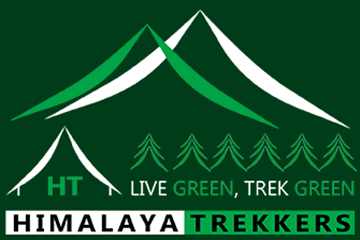

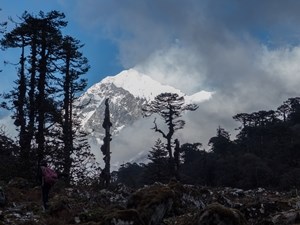

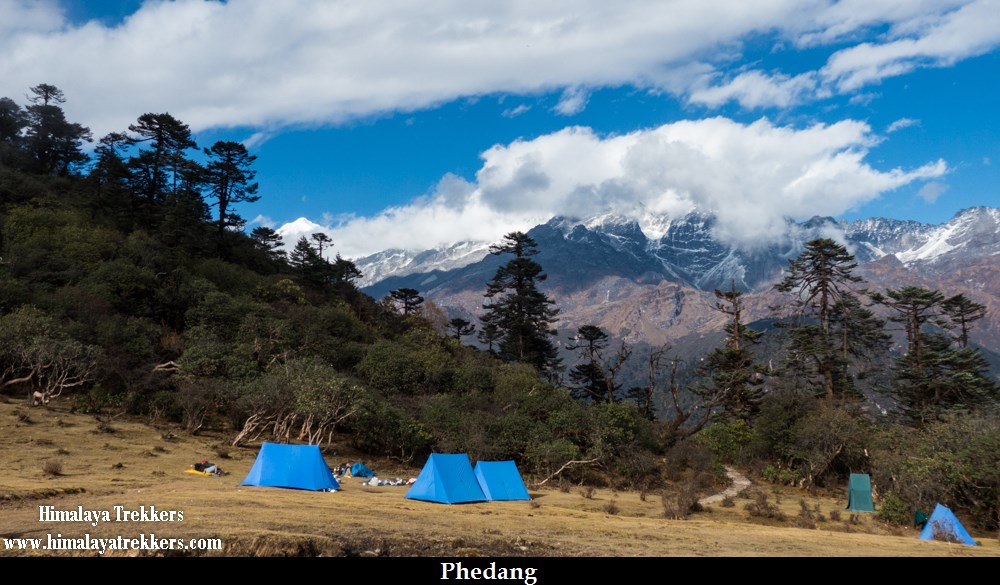
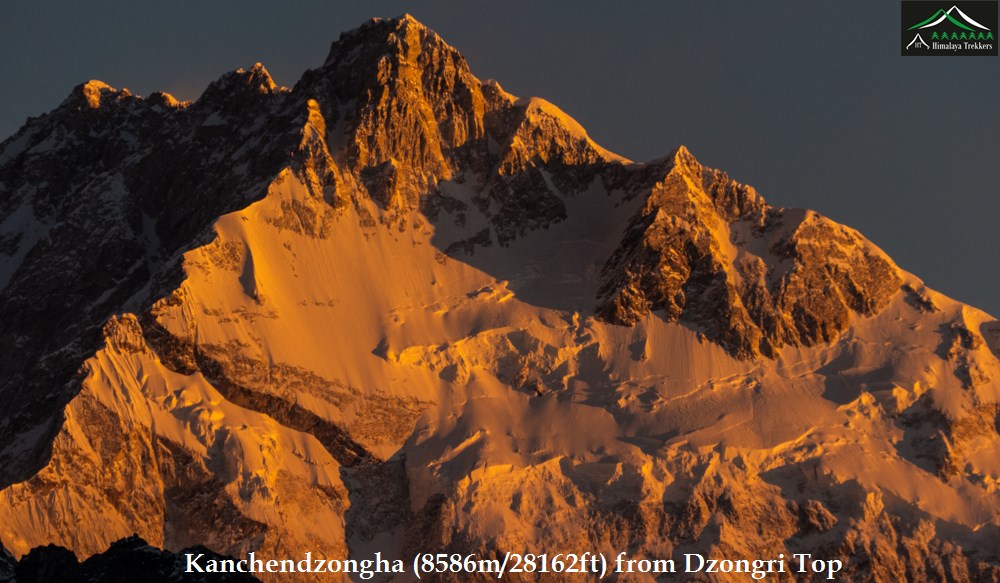
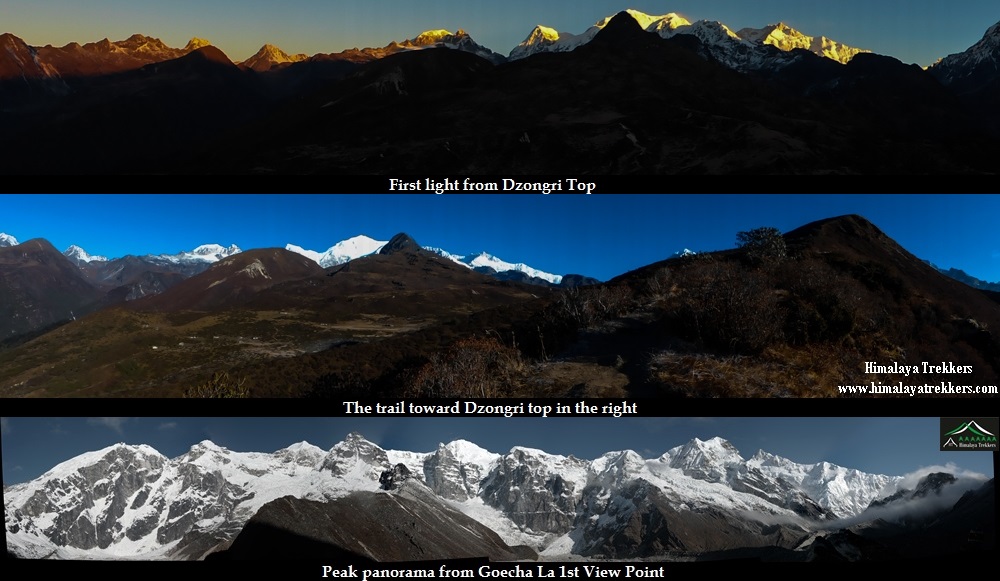
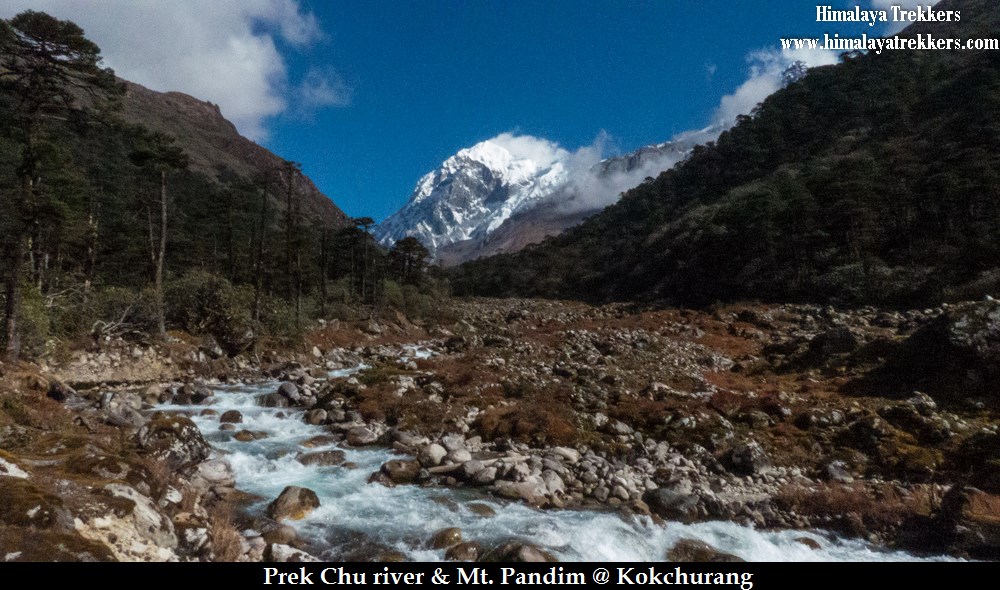
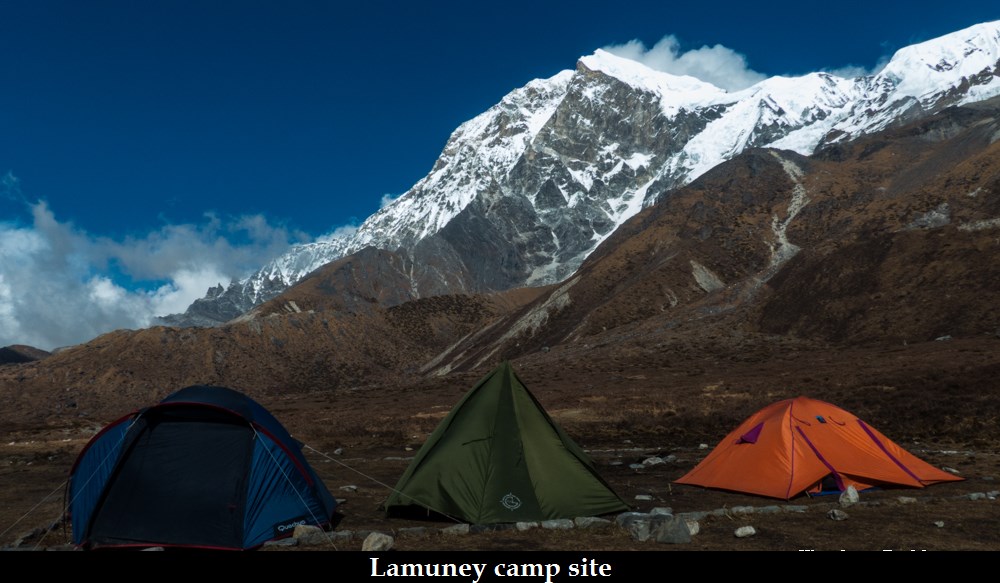
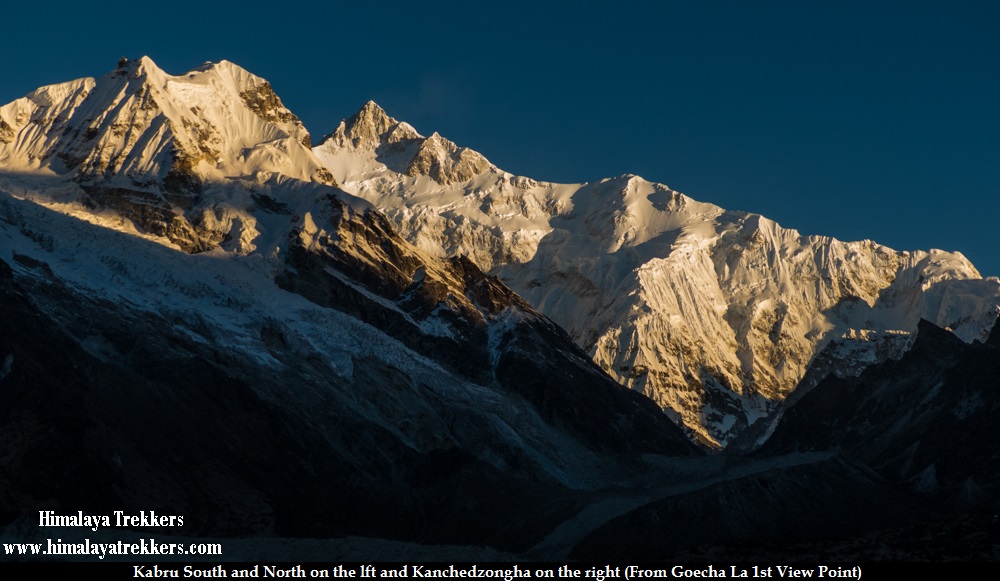

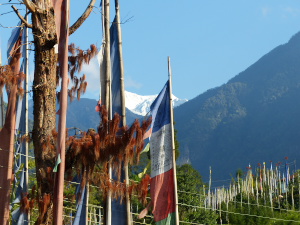
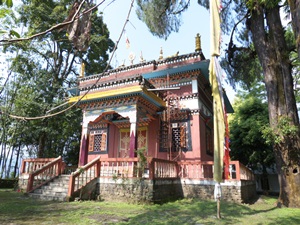



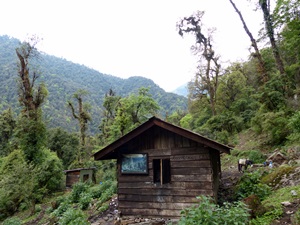
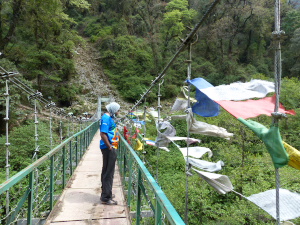


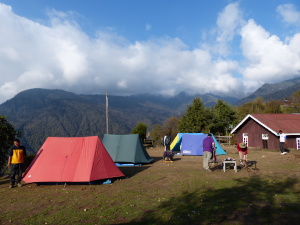
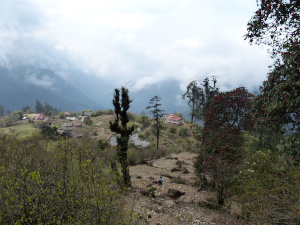




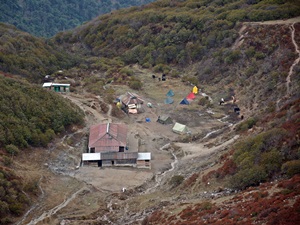
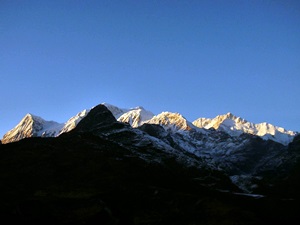
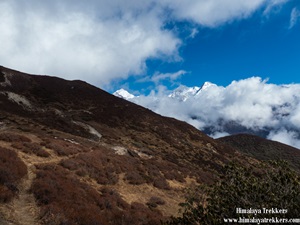

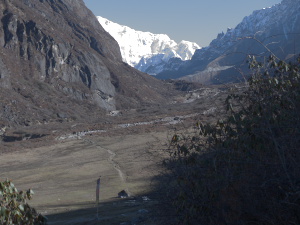



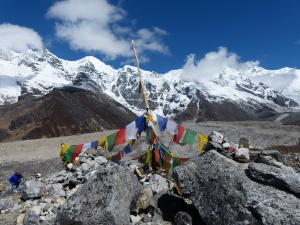


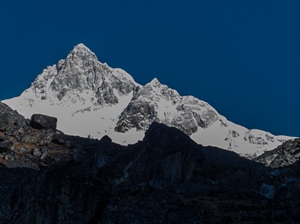
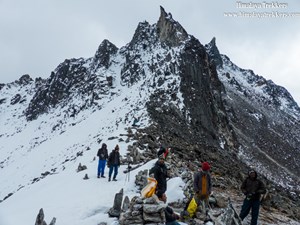
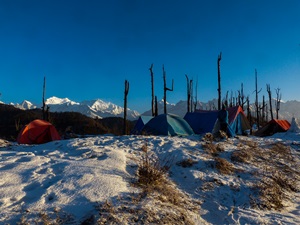
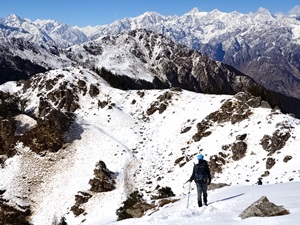






Tour Reviews
I had a great experience with the HT team, doing the Goecha La trek in November. Our trek leader Ram was wonderful, he made us all feel very comfortable and safe during the 8 days of trekking with his in-depth knowledge of the area/terrain, his kindness and humour. The food was excellent, the whole team were so kind and helpful, not to mention the breathtaking route and views. Definitely a trip to remember and I look forward to another excursion with the HT team.
Last October we did the Goechala trek and monastery trek with the Himalaya Trekkers. The communication beforehand was really nice and helpful.
The monastery trek was last minute and they made sure we could join. Nice trek if you want to know more about the culture of West Sikkim and stay in homestays.
During the Goechala trekking we were with a small group and a lovely guide. Suman was friendly and careful to make sure every one felt good to adapt to the height.
We would recommend the Himalaya trekkers if you are planning a trekking on Sikkim
Hi Sapta! We are now back in Sweden after our last few days in India. We had an amazing trek and are really happy with everything, and the team has been fantastic ☺️ Thank you so much for all your support ahead of and during our trip!
All good, we had a great trip! A bit of rain at first, but great views for the important days! Thanks for everything Sapta, you’ve been great! And we just wanted to say as well that Suman was an amazing guide, we really want to commend him for all his hard work, and his patience and kindness.
Last week a group of 7 individuals part of the HT group all completed the Goechala trek very successfully. We were given complete support and immense guidance even before the start of the trek by Himalayan trekkers. When we got to Yuksom, trek leader Ram and his staff were caring for us and made sure we were all taken care off very well and they supported our finish. The final touch by the chef by baking us a wonderful cake in the absence of an oven was very overwhelming.
Looking forward to more of these Himalayan treks with HT.
It was a great experience in the month of April 2022 for a group of six people and we experienced all forms of nature while trekking right from hail storm to snow flakes and even rainfall. The trek was tiring but we all made it to the summit at the end of the day. All thanks to our trek leader. MR. RAM, a local guide. He helped us in every possible way. We got best of services compared to other trek groups starting from having enough food on the way till having drinkable hot water during camping any time. Nothing fall short and none of us fell sick. All the best, keep having best foot forward the way you are doing and looking forward for more bonding with you in coming days.
The 4 of us did the Goechala Trek with Himalaya Trekkers in April 2021. We requested HT for an exclusive trek for our group and they gave us a great trekking experience. Right from the planning phase, Rhik and Mr. Roy were responsive and made sure all our requests were taken care of.
Their guide Dominic was there at the Bagdogra airport to pick us up and was with us throughout the trek – he is an amazingly warm and fun person to be with. At the base camp, 2 people from our group didn’t have all the required documents in place and Dominic was kind enough to put everything together before we started the trek.
During the trek, the food, luggage transfers and all the camping arrangements were well taken care. We just enjoyed ourselves while the HT team took care of everything.
Overall, a fantastic experience and we’re sure to trek with HT again.
I was with HT at the Goecha La pass in November 2019. Great organization, wonderful People and a beautiful Route. Very good Guides, delicious Food, amazing Views. It was my first such a high Trip and from the beginning I felt good and safe there and if I ever go again, I will definitely go with HT 🙂
opted for the Goecha La trail in late September, my second hike with HT.
Our point of contact, Rhik, was a great guy – friendly, warm and very helpful. He took good care of operations. Also, took note of trekkers feedback. Kiran, our tour guide, was probably the best part of the entire package! It was fun completing the challenging trail with him. He took care of our meals and guided whenever required. Some of us have already made him our go-to guide for our next big Sikkim adventure! The hike group comprised a diverse bunch of folks – warm, friendly and future hike buddies.
The best part about HT is that they don’t ‘school’ you – you’re expected to figure out basic things by yourself. I really appreciated this aspect.
All the best, onwards and upwards!
It was my first Trek, to Goecha La and trust me, I was very unprepared, even after repeated and personal advice from HT organizers (Rhik) on “Do and Don’t”. At the base camp, we got a fantastic guide (Kiran)- and I was convinced to buy a trekking pole and replace jeans by Trekking trousers and started my journey on running shoes, which was torn in a day. It is a whole story, how I managed the rest of the days, but our guide and other crews played a very important role. We met different groups on the way; it was a great opportunity to compare them. I could share the organisational trouble faced by other trekkers from other group and I was convinced that I choose the best by accident. Next time, HT for sure (if they have package of my interest). Remember, they take at most 15 trekkers in a group – it helps as you get a lot of personal attention. Hope they keep it that way !
I did the Goecha la trek with HT in October 2019 and I also did Kuari pass (Curzon’s trail) in November 2018. Both of the experiences with them were overwhelming. I would always recommend Himalaya trekkers because of their excellent trek leaders, professionalism and hospitality while trekking. I must mention that they always provide the best suggestion for any kind of trekking guidance one needs. I am sure about one thing that I will be trying to complete all my bucket list treks only with Himalaya Trekkers. Thanks for all the wonderful memories that I have made while traveling with HT.
Oh yes! Rhik was simply awesome. What a nice guy! Professional and knows his stuff. We had a great time with HT. Totally recommend them! The trek was well organized, they gave us good quality sleeping bags, tents were always pitched and ready and food was hot and tasty.
I would like to take this opportunity to thank you for a truly fantastic trip. The whole team – organised by MB – were nothing short of brilliant. MB in particular is a fantastic guide and was always helpful, making sure that all members of the group were safe and catered for – he is a real asset to your company. I will not hesitate to recommend HT to my friends and family.
We were ready for an adventure in the Himalayas and that is exactly what Himalaya Trekkers provided for us. Pre-trek communication and organization with Sapta and Rhik provided both an efficient and a comprehensive preparation, laying the foundation for a once in a life time, never-to-forget experience. The trekking team in Sikkim led by MB delivered exceptional personalized service, responding to every concern with respect and diligence. Catering, led by Bhim was as delicious as it was creatively gourmet. When we next trek it will be with Himalaya Trekkers.
I did Goecha La Trek with Himalaya Trekkers in Oct 2015. The trek was really exhilarating and exciting. Saptarishi, founder at Himalaya Trekkers was really helpful in providing the inputs for both physical and logistical preparation. The trek itself was quite well managed and organized by the trek leader. The excellent part was that the group size was only 8. We could enjoy the company of each other during the trek and were able to enjoy the scenery around the camping sites. Overall, the trek leader, helpers and cooks were really friendly and there was a good atmosphere between the group. I will highly recommend Himalaya trekkers to any one who is looking to do treks in Himalayas.
It was a pleasant experience. I would like to mention first that I truly believe your guidelines on aerobic fitness development helped us enjoy the trek better. The stay at Yuksom was simple and comfortable, thus more to our taste. The guide (Bheem), the cook and Milan were really nice fellows. While they took care of the essentials, they also left us be by ourselves a lot. Eg., not instructing novices like us continually on how to walk, but only pointing out where we were wrong etc… The food was, well, above expectation by far. We would hire the cook ourselves at Chennai if he would just come (notice we never mention his name..? Yes, we do not care for competition). The view, throughout the route, was extraordinary! We are a bit sad that we could not proceed beyond Dzongri. However, only we are to blame for it. Better shoes next time. And yes, if we decide to go on a trek again, we’ll most likely give you a ring.
Himalaya Trekkers is the best availed opportunity for trek lovers, if u are planning for any trekking they are your best solutions. They organise as per your conditions suitable which is beyond golden words. Keep it up.
Leave a Review